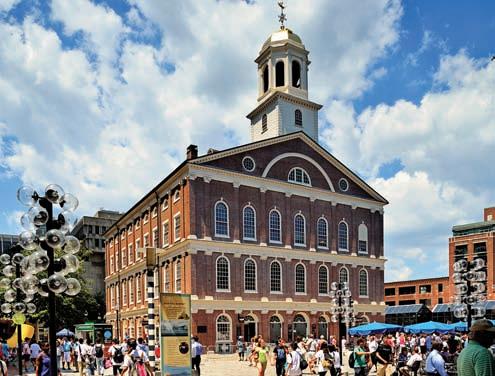
53 minute read
Cruising—Keeping Up with the Times
Faneuil Hall in Boston, c. 1742, is a stop on the National Park Service’s Freedom Trail self-guided tour. The city of Boston takes pride in presenting the Hall as “the home of free speech” and the “Cradle of Liberty” in recognition of the events that took place at this town center.
Riviera,” has risen sharply in popularity among cruisers. No surprise, as this picturesque town with its Spanish Colonial Revival architecture, beautiful scenery, enticing beaches, water activities, and surrounding wineries has so much to offer. A stroll down JORGE SALCEDO / SHUTTERSTOCK tree-lined State Street, with its shops and restaurants, will give you that Riviera vibe. The architectural style of the nearby historic Santa Barbara County Courthouse is a popular attraction.
Advertisement
Los Angeles’ port of call has one of the longest lists of excursions available. There’s Hollywood and Sunset Boulevard, of course, but also beach outings at Santa Monica, Venice, and Huntington Beach (Surf City), to name a few. The world-class Getty Museum near Santa Monica is also worth adding to your list, as well as the vibrant art gallery scene of the Los Angeles area. Beverly Hills, downtown Los Angeles, and Olvera Street showcase the ‘old’ LA.
San Diego port stops are usually long, until 10 p.m. or later, and all the highlights are close to downtown, so you’ll have an opportunity to take in more than one or two adventures—not to be missed is a visit to Balboa Park and the San Diego Zoo.
There are plenty of offerings for naturelovers all along the coast from whale watching to hikes among 1,000-year-old redwoods. Cruise lines often partner with local, and even world-renowned experts, who share their experience and knowledge with tour groups. The waters of the Channel Islands, just off the coast of Santa Barbara, is a popular whale watching spot, and Muir Woods, just north of San Francisco, offers a hike through the iconic redwoods of California.
You’ll find diverse and plentiful excursion lists on the California coast cruises as the iconic highlights of each region are very accessible from the ports. It’s imperative to read up on the shore excursions you are interested in before booking your cruise; don’t rely on the port stops alone to make your decision. Also, be sure to check how long each port stop is so you know if you have enough time for self-guided exploring.
ARE YOU INSURED?
FAMILY SECURITY PLAN 75
Do you have Accidental Loss Of Life Insurance Protection*?
As a Chevron Auto Club member in good standing, you enjoy many valuable benefits. A benefit not to be overlooked is your option to enroll for additional insurance benefits. There is no medical application to fill out, no health questions to answer, and no physical exam required.
• Accident coverage anytime, anywhere, 24-hours-a-day, 365-days-a-year • Coverage available for you and your eligible dependents • Benefits paid regardless of other coverage • No physical exam
FOR FURTHER DETAILS CALL 1-800-222-0585
* This policy provides limited accident-only benefits. This policy has exclusions, limitations, reduction of benefits, and terms under which the policy may be continued in force or discontinued. See the plan description for more complete details of coverage. Chevron Auto Club Family Security Plan is underwritten by Life Insurance Company of North America. Coverage amount reduces to 50% at age 70 and another 50% at age 80.
DANITA DELIMONT / SHUTTERSTOCK

EAST COAST
The popular fall foliage tours in the Northeast are the premier draw for East Coast cruising, and most cruise ports of call cater to that much sought after experience. The view from the ship rivals that from the land when viewing the explosion of forest color that stretches to the water’s edge. You will find several small ship outfitters cruising along the East Coast that take advantage of smaller harbors and inland waterways, with passenger counts from 150 to 900.
The fall foliage tours begin and end in historic cities that are well worth exploring either before or after the cruise. Excursions are typically offered to places like Boston’s Freedom Trail and the historic mansions of Newport, as well as Quebec’s Chateau Frontenac, during the ports-of-call stops.
Visiting and photographing lighthouses is an enduring pastime. You will not be disappointed with the chance to view, and tour, several historical lighthouses—there are Castle Hill and Rose Island lighthouses in Newport, Edgartown Lighthouse on Martha’s Vineyard, and Portland Head Light, the oldest lighthouse in Maine, to name a few.The number and selection of lighthouses will depend on your route.
An excursion out of Portland will take you to the historic village of Kennebunkport, home of the Summer Whitehouse during the Bush years. Greek Revival and Victorian-style mansions built in the eighteenth and nineteenth centuries by wealthy merchants line the tidy streets. A ferry ride takes you across Cacos Bay to Peaks Island to enjoy a classic lobster bake, a quintessential Maine experience. During the fall season, a visit to Maine would not be complete without a tour of Acadia National Park.
While most of the big ship cruises focus on a northeast U.S. to Canada route, smaller cruise ships hit numerous ports all up and down the coast. A few big ship cruises will head south from Baltimore and will stop at Charleston, Port Canaveral/Orlando, and the Bahamas, or similar stops. A classic cruise from New York will be a 7-night excursion down to Florida and the Bahamas. Of course, there are also many itineraries that go all the way to the eastern Caribbean, but that’s another story. There are even a few cruises that originate in Florida and end in Quebec, with lots of ocean time if that’s to your liking. SHACKLEFORD PHOTOGRAPHY / SHUTTERSTOCK
The lobster bake at Bar Harbor in Maine is always a crowd favorite (left). Lighthouses hold a special place in the hearts of enthusiasts, and this light house on the coastline of Maine (below) is sure to please.
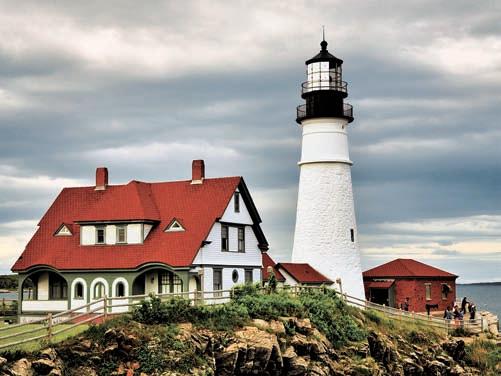
I NFORMATION FOR T RAVELERS
Akin to selecting a hotel, picking the type of ship and the location of your cabin make a big difference in the enjoyment of your journey.
You have the option of choosing your own cabin on a cruise—highly recommended. There are many variables to choosing a cabin. Ever been annoyed by a loud ice machine near your hotel room? Elevator noises? Well, it’s no different on a cruise ship, but there are many more variables due to the nature of dance lounges, theaters, and music venues. If noise bothers you, you won’t want a cabin above or below public venues. Same with busy corridors close to crew quarters, and the like.
The elephant in the room—seasickness. While big ships don’t typically evoke sickness, if you are concerned, be sure to choose a cabin near the middle of the ship—cabins at the front have the most wave motion, aft has motor vibrations, which can have the same effect as waves.
Most of the major cruise lines operate on both coasts. Small ship cruises on the East and West coasts include American Cruise Lines and National Geographic/Linblad ships that include onboard expedition team members.
Passports: The rules keep changing, but to be safe, assume you need a passport, as the law requires each ship to make one stop, no matter how brief, at a port outside the U.S.— i.e., Victoria, Ensenada, Bahamas, New Brunswick, etc.









“Scenic Drives” is compiled by the staff of ODYSSEY.
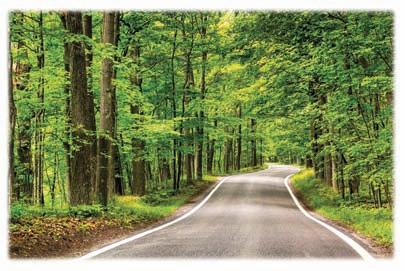
SCENIC DRIVES
underground mining museum and tours, are an added bonus to the scenic beauty of the rugged peaks of the Rio Grande. Don’t miss a chance to stop at the overlook to hear the roar of North Clear Creek Falls twenty-six miles west of Creede at turn-off 510 (facilities on site). The town of South Fork makes a good base camp for an out-and-back trip, or continue on to Blue Mesa Reservoir, with additional camping, hiking, and fishing spots. (Elevation 9,560).
Tunnel of Trees, Michigan
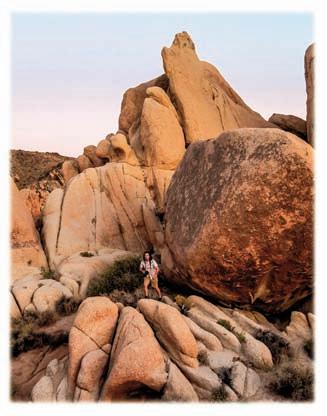
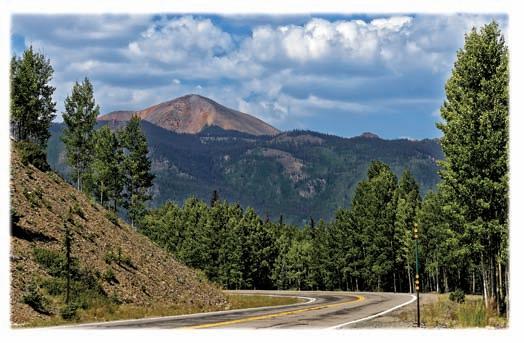
Northern Michigan’s scenic byway, M-119, leads to a 20-mile wooded corridor dubbed “Tunnel of Trees.” Be sure to pull off to get a chance to be mesmerized by the dappled light and color variations surrounding you. The route offers more than just trees, as spectacular as they are; there are also charminglittle towns nearby, views of Lake Michigan, dunes for climbing,and strolls along the beach. Start in Harbor Springs, a popular resort town, and follow M-119 as it skirts the lake and heads into the trees on your way to Cross Village. Halfway through is the tiny hamlet of Good Hart, where the Good Hart General Store has been operating since the 1930s. Perhaps purchase a Petoskey stone (above), unique to the area, in town before heading to the trees—a unique keepsake. Silver Thread Scenic Byway, Colorado ROBERT WALTMAN / SHUTTERSTOCK Paved or off-roading— the Silver Thread 117-mile route allows you to access rugged backcountry roads that get you up close to old mining sites that can be seen from paved highway 149. There are two old mining towns on the route, Creede and Lake City, with shops, food, and camping. The mining towns, which include an
BARNES IAN / SHUTTERSTOCK
Joshua Tree Scenic Drive, California
Joshua Tree National Park’s nearly 800,000 acres showcase a landscape formed by extreme heat, winds, and rain, creating both dramatic and often playful-looking geologic features. The north entrance near Twentynine Palms SCALIA MEDIA / SHUTTERSTOCK and the Visitor Center on Hwy 62, will hit many of the highlights in a 30-mile point-to-point route on Park Boulevard. This unique desert wilderness is not big on facilities, so plan ahead, especially if you’re taking any of the 4-wheel drive side routes. The main route will take you by famous rock formations such as Jumbo Rocks and the Hidden Valleyarea, popular with rock climbers. The park encompasses an area where two distinct desert ecosystems meet, the Mojave Desert (high) and the Colorado Desert (low). The gnarly Joshua tree, native to the Mojave, the rock formations, and the variety of desert plants and animals make this a truly memorable drive. T aking a scenic drive is a great way to see our vast country one road at a time. There is an abundance of routes to choose from—something in every state. We’ve chosen a few for you to consider.The “Scenic America” website has a listing of scenic drives in every state at www.scenic.org/blog/state-scenic-byways-maps-available-for-download.

PHILIP ARNO PHOTOGRAPHY / SHUTTERSTOCK
Davis Mountain Scenic Loop, Texas
This 75-mile scenic loop in the Davis Mountains State Park in far west Texas on TX-118 and TX-166 reaches an elevation of 6,700 feet, the highest road in Texas. There
are several, not one, peaks in the park. Fort Davis, the startand endpoint of this loop, is a classic small town, situated at the foot of the mountains. The Fort Davis National Historic Site with nearly 100 building sites, a few completely restored, offers a glimpse into life at a frontier military post in the southwest in the late 1800s. Along the route, there are fantastic views of multiple mountain peaks from the flats, and awe-inspiring overlooks from the ridge tops. The turnoff at route 78 leads to the McDonald Observatory of the University of Texas at Austin. It is located on Mount Locke in the park. There is a Visitors Center with detailed information, and daily guided tours (check ahead for times).
WILLIAM SILVER / SHUTTERSTOCK
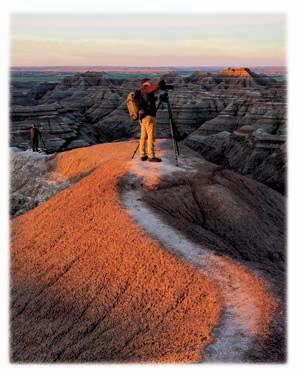
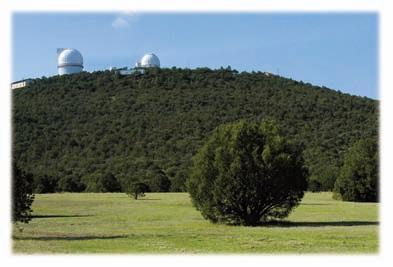
Badlands Loop Road, South Dakota
It’s not just a feeling, you know you’re in the middle of nowhere in the
J W COHEN / SHUTTERSTOCK Badlands National Park; self-reliance is key. This 58-mile route on SD 240 in the North Unit of the park sets you in the middle of stunning, colorful rock formations of buttes and spires that make you feel gleefully small. For the explorer-types, some of the country’s richest fossil beds are found here in the layers of sediment deposits. There are nearly a dozen overlooks worth stopping at to memorialize the view with your favorite camera. Be sure to stop at theBenReifelVisitor Center, part of the park’s headquarters, for information and a good map before heading out. The route is not a loop per se, start point and end point, but it does take you to and from the main interstate I-90, which runs through Sioux Falls. Turn off I-90 at Exit 110 to State Hwy 240, at the Minuteman Missile National Historic Site.
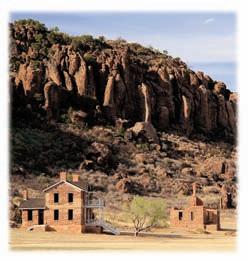
Great Smoky Mountains National Park, Tennessee and North Carolina
CHANSAK JOE / SHUTTERSTOCK
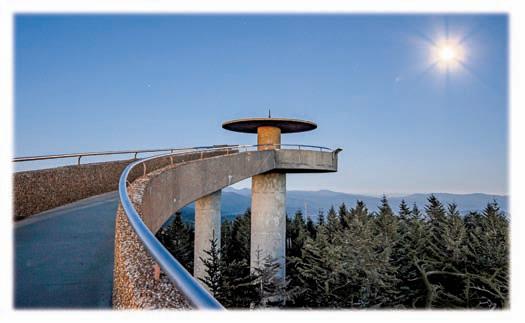
Newfound Gap Road, Interstate 441, that connects Gatlinburg, Tennessee with Cherokee, North Carolina, crosses the national park at the sweet spot. There is so much to see and do amid this mere 36 miles, don’t be tempted to drive straight through. The drive can be accomplished in one and a half hours, but best to plan three to four hours to take the turn-offs to historical sites, short easy trails, and, of course, the great views, both near and far. Don’t miss Clingman’s Dome Road turn-off, which is twenty miles from Cherokee, and the observation tower (steep half-mile path from the Visitor Center) with spectacular views from your perch of 6,643 feet elevation, highest point in the Smokies.


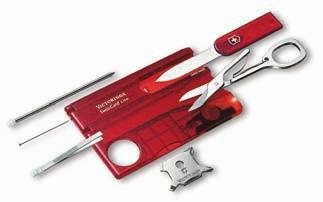
T R A V E L
BULLETIN
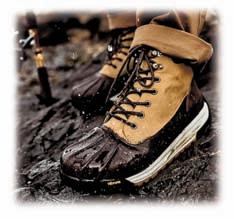
Newand noteworthy items and events. Check them out!
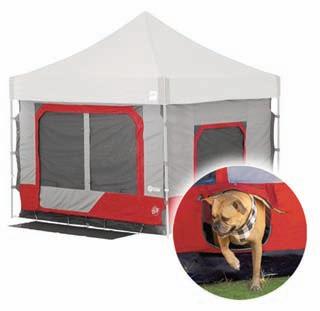
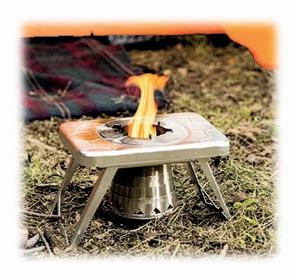
Compiled by the editorial staff of ODYSSEY

This little LED card- light comes with its own set of handy tools. Scissors, tweezers, pressurized pen, pin, multitool, magnifier, and emergency blade, all tucked into this credit card-sized gem of a puzzle. www.Victorinox.com. Approx. $50.
Weather, What Weather?
The All-Weather Duckboot by Huckberry is waterproof, stylish, and good for all-day comfort. A shock-absorbing midsole, breathable membrane that wicks away moisture, and ‘Trapunto” toe box enhance wearability. The Vibram outsole offers great traction anywhere. Approx. $188. www.huckberry.com.
E-Z Up Combo
If you already have an E-Z Up canopy, slant or straight leg, you can turn it into a roomy tent instantly. E-Z Up Camping Cube™ Sport, and Cube 6.4 attaches directly to your trusty canopy, turning it into a full-fledged tent with handy features like doggy-door, screens, wide-entry, and storage pockets. Starting at $120. www.ezup.com, or amazon.com.
Can’t function without your morning espresso? The Wacaco’s Nanopresso is a mini marvel that can go anywhere with you. Your morning cup-of-joe is never out of reach. Several versions, including an adapter for pre-made capsules, are available. www.wacaco.com. Approx. $70.
Crossover
Crossbody travel bags have been around for a long time, but their rising popularity in the men’s market shows that men have caught on to the comfort and safety that this bag style has to offer. Check out the antitheft, water-resistant bag with charging port by Sunmop. Approx. $32. www.amazon.com.
Comforts of Home
If you’ve gotten use to the simple pleasure of a silk pillowcase as part of your nightly routine, taking a Mulberry Park Silks pillowcase, with travel case, on your next trip is a no-brainer. Lightweight and takes up so little space. (Tip: take a bright color so you won’t forget it.)
Approx. $25.www.mulberryparksilks.com.
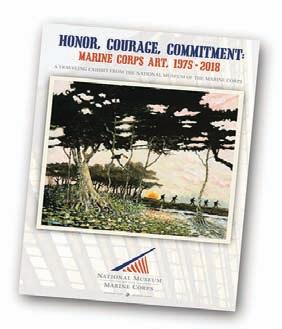

The National Museum of the Marine Corps has curated a traveling exhibit of artwork from the museum’s Combat Art Gallery, and others. The 34 paintings and two sculptures created by the artists, most of whom were deployed in combat, result in a knowedgable commentary on the experience of the men and women of the Marine Corps. The last two stops of the tour are scheduled at the Turtle Bay Exploration
Park, Redding, CA from January 21 to April 30, 2023, and the George H. W. Bush
Presidential Library & Museum, College Station, TX, from May to September, 2023. The 120,000 sq. ft. building on the 135-acre site of the National Museum of the Marine Corps is located at 1775 Semper Fidelis Way, Triangle, VA 22172.
Online information at www.usmcmuseum.com. The curtain is pulled back and the multi-faceted life of much- belovedchildren’s author and illustrator, Beatrix Potter is showcased in an interactive exhibit curated by the Victoria & Albert Museum in London. The “Beatrix Potter: Drawn to Nature” exhibition contains over 200 of Potter’s personal artifacts including letters, photographs, artwork, sketches, and manuscripts. The exhibit explores not only her creative work, and how she developed her characters, but also her endeavors in scientific studies, farming, and conservation that are all an integral part of her legacy. A beautifully composed 216-page companion book, published by Rizzoli Electa, 2022, is available on Amazon. The exhibit will be on display at the Frist Museum, 919 Broadway, Nashville, TN 37203, April 7-September 17, 2023. www.fristartmuseum.org.
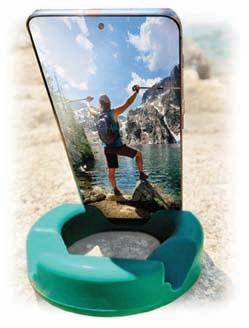
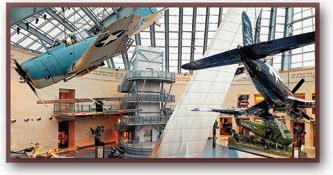
Mini Multi-Stove
A compact, light-weight multi-fuel camp stove that lets you choose wood or gas. Great stove to keep in the trunk for spontaneous, or emergency, stops on a road trip. An additional adapter allows the stove to make use of fuel tablets and liquid fuels as well. Starting at $65. www.ncamp.com.
Keep It Steady

A handheld gimbal stabilizer for your iPhone is a great asset at sporting events— be they youngsters or pros. Great for travel bloggers, or for those who just want to share video with family and friends, without making them dizzy. Check out DJI’s 3-axis OM 4, or the OM 5 for the serious videographer. Approx. $159. www.dji.com.
Light Watch
Chandler Eco-Drive Movement watch by Citizen in green is stylish, durable, and useful. Its features include water resistance to 330 feet, 1/s/60 minutes chronograph, 24-hour display, and date, along with stainless steel construction, power-save, and solar/indoor light charging good for decades. Approx. $150. www.amazon.com.
The Humble Donut
Toss the GoDonut in your bag and go. You will have a tough, durable, and handy stand with no sharp edges for phones and tablets. Available in so many colors, there’s going to be one that is just right for you. Made in USA. Approx. $20. www.godonut.com.
or a gadget, device, or service that will help you find the travel information you need to make your trip as surprise-free as possible and keep everything on track.
You’ve probably noticed that when you’ve queried trip-related information online, a slew of websites promoting their apps pop up—many are quite good.
There are two main categories of apps—the planning and booking stage, and the onthe-go stage.
For planning, most folks are familiar with online travel agencies (OTA) like Expedia, Travelocity, and Priceline. Apps using a metasearch, like Kayak, Travelzoo, and Google Flights, among others, claim better rates. (Note: OTAs book direct, while metas connect you to the seller.)
But there are apps that specialize in a single feature—think Airbnb, Uber, and Lyft. Omio adds train, busses, and ferries to their airline bookings. Viator specializes in booking local tours. But, there are many, many specialty apps of all kinds. Check out these few specialty apps to use on-the-go: iExit, interstate services Autio, US road trip stories HotelTonight, last-minute room reservations MyTSA, wait time info GlobeTips, tipping info TheFork, restaurant booking AllTrails, hike, bike, run Localeur, verified local reviews FlightAware, live flight tracker MAPS.ME, offline maps RickSteves, offline travel intel TimeShifter, master jetlag SkypeWiFi, VoIP service XECurrency, realtime rates GoogleTranslator, languages
As with all travel plans, have fun researching it all and decide what’s worthy of your time and money. Happy Travels!
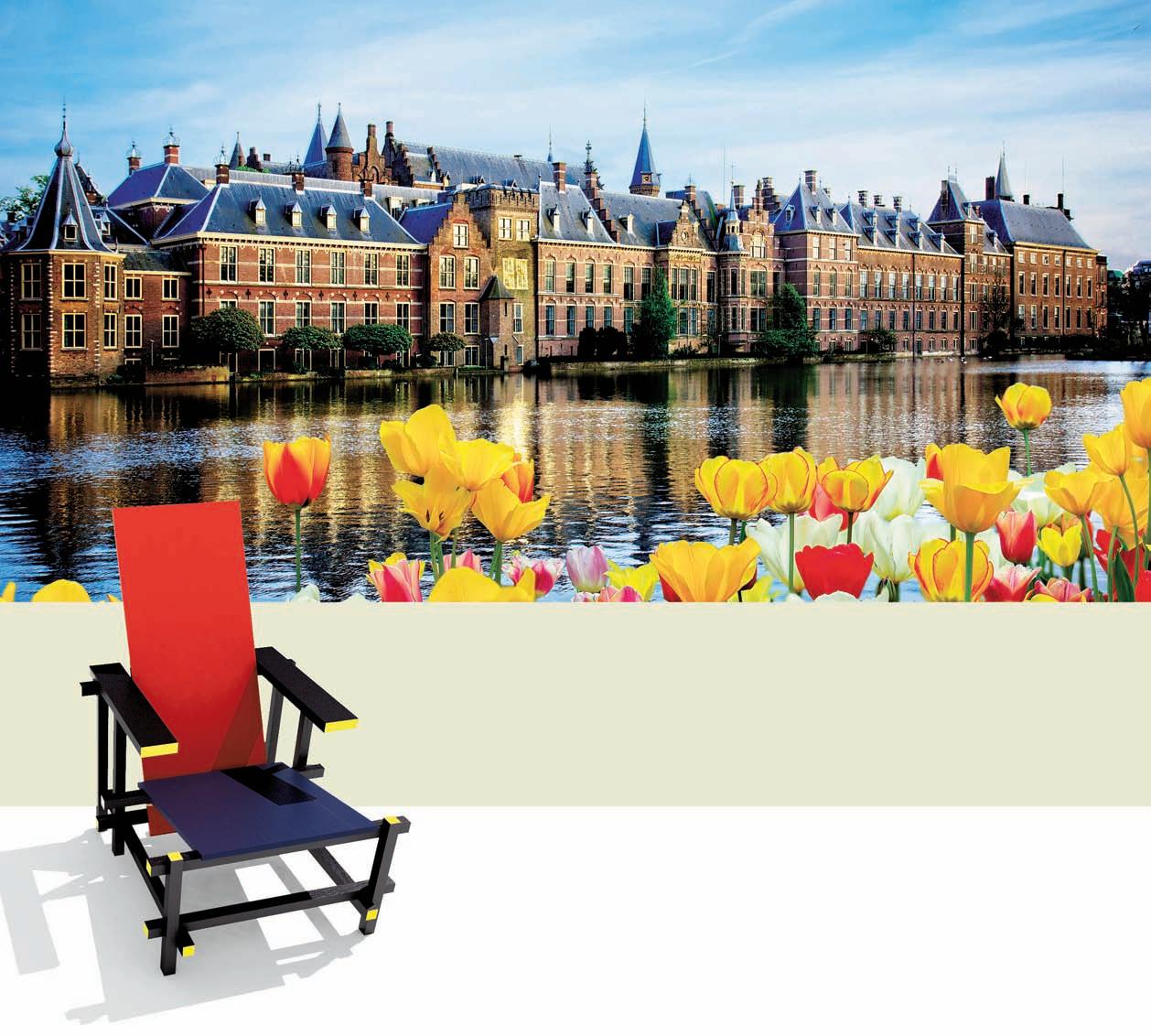

The Binnenhof complex (Netherlands parliament) as viewed from across the Hofvijver (court pond) in The Hague (top). The Torentje (small tower) on the left is the office of the Prime Minister. The iconic chair design (above) by Gerrit Rietveld was created as part of the furniture for the Schröder House in Utrecht. The famous Cube Houses (right) in Rotterdam were built with community engagement in mind. Classic scenes on Amsterdam’s canals (opposite top) are bridges festooned with flowers, and parking spots for bicycles. A detail (opposite bottom) from the main door of the Het Loo Palace in Apeldoorn.


NEIRFY/SHUTTERSTOCK
PICTURE PERFECT
PHOTOS: ABOVE: NEIRFY / SHUTTERSTOCK; LEFT: PENTITHAL / SHUTTERSTOCK; BELOW: EQROY / SHUTTERSTOCK
Recently, while shopping for an electric bike, we came across a highly rated, very well-made, sturdy e-bike made by Royal Dutch Gazelle. We were surprised to learn that it came from the Netherlands—although, it really shouldn’t have been surprising, as it is common knowledge that Amsterdam is a city laced with bicycle lanes throughout the city that serve thousands of daily two-wheel commuters. The Royal Dutch Gazelle bicycles hail from Dieren, in the province of Gelderland. The title, Royal, was bestowed by Princess Margriet in 1992 at the 100th anniversary of the creation of Gazelle. That same year, the eight-millionth bike rolled off the elaborate assembly line.
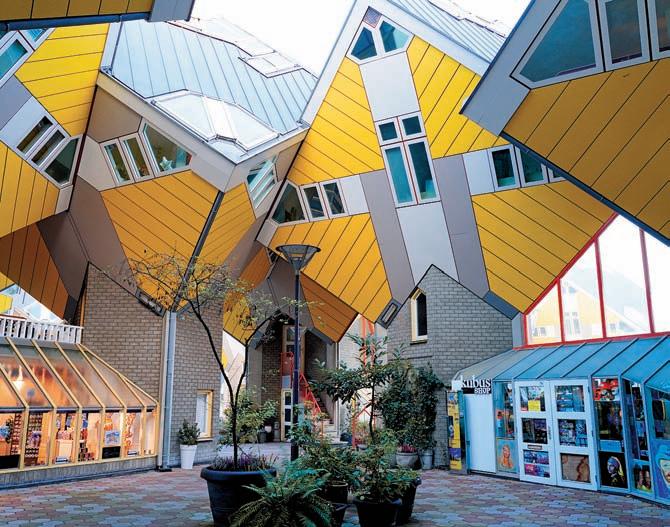
The eastern province of Gelderland is one of ten provinces surrounding the two provinces of Holland. While Holland does, without a doubt, attract tourists from around the world, there are dozens of trip-worthy cities spread throughout the other ten provinces that showcase not only historical sites, but some of the most innovative, modern architecture found anywhere in the world. Framed by tidy farmlands, canals, and nature preserves, the relaxed vibe of the provinces is impossible to ignore. A bonus—the outer provinces afford a great chance for a more immersive cultural experience without the hustle and bustle of the busiest cities that cater to the tourist market.
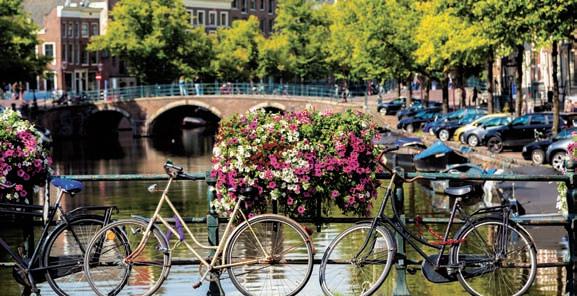
First, let’s break it down—many English speakers still refer to the Netherlands as Holland. While not taken as an offense by Netherlanders, it is inaccurate. (Indeed, until recently, the moniker Holland was promoted in tourist literature both inside and outside of the Netherlands when referring to the country). To be accurate, Holland is actually two provinces (NoordHolland and Zuid-Holland)in the Netherlands, collectively referred to as Holland. Holland is one of the oldest major trading centers in Europe,
THENETHERLANDS
N O R T H S E A
THE NETHERLANDS
FLEVOLAND NORTH HOLLAND
Leeuwarden
FRIESLAND GRONINGEN
DRENTHE
Amsterdam
The Hague
SOUTH HOLLAND
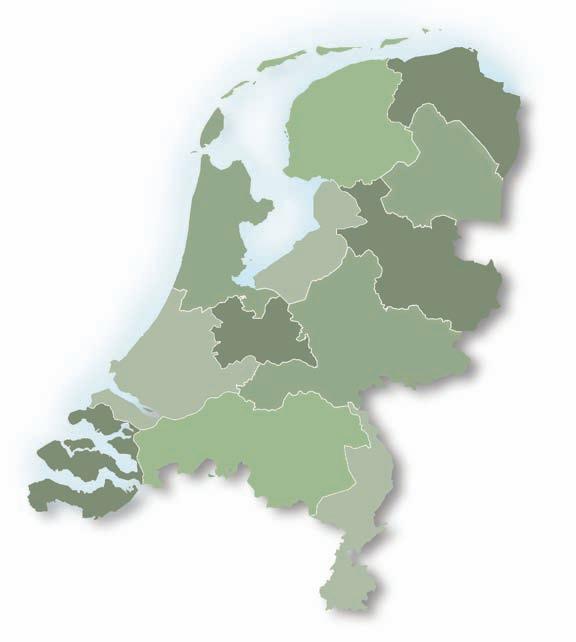
Rotterdam
Breda UTRECHT
Apeldoorn OVERIJSSEL
GELDERLAND
NORTH BRABANT
Nijmegen
ZEELAND
LIMBURG
Maastricht
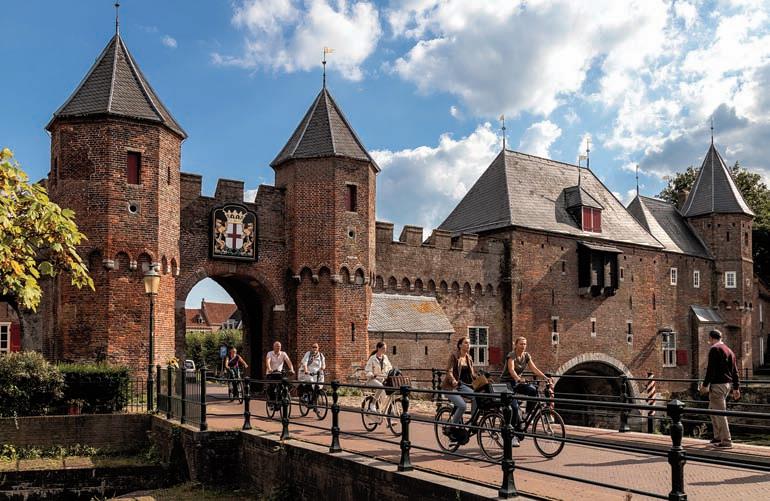
JAN VAN DER WOLF / SHUTTERSTOCK
The fourteenth-century river and road gate, Koppelpoort, is one of the main attractions in the quaint town of Amersfoort, just 15 minutes from Utrecht. With as many as six trains in an hour, it’s an easy intercity train trip. Free of crowds, you will have plenty of time to explore the old town center, shops, and Mondrian House. The colorful Market Hall in Rotterdam (left) is part of an ultra-modern structure with apartments and offices built into the outer shell. The favorite son of Delft,artist Johannes Vermeer, became world famous with only 37 known paintings, including The Milkmaid, ca. 1660 (above). The nineteen windmills and Museum of Kinderdijk (below) in South Holland give visitors a visual treat and a hands-on experience.
encompassing Amsterdam, The Hague, and Rotterdam, and is the major tourist region in the country.
The popularity of Holland as a tourist destination has skyrocketed over the years making tourist-drenched Holland in need of some relief. Coming to the rescue, the TouristBoard has set in motion a campaign to change their tourism focus. Striking the headline “Holland” on their countrywide tourist literature, they have replaced it with the country name, Netherlands. (Don’t be deterred for a minute from visiting the main attractions of Holland due to crowds—the sites are not to be missed and the crowds are manageable). To the great benefit of visitors, the good news is that the other ten provinces are finally getting their due.
To start your visit to the Netherlands in Amsterdam is still a good choice. Amsterdam bustles with city excitement, a fast pace, and non-stop activities. Here you will find the iconic canal bridges brimming with flowers, the Van Gogh Museum, Anne Frank house, Stedelijk Museum, the Royal Palace, and tens of thousands of bicycles. (Careful not to wander into the bike lane to get that perfect shot; bikes have the right-of-way!)
Starting the day from your hotel, enjoy the hotel breakfast or stop at the nearestcafé for a cup of coffee and a delicious appelflap pastry, then take any one of the canal cruises to get a feel for the layout of this water-centric city. Keep in mind, it can be very relaxing, so I’d recommend getting a good night’s sleep before embarking. Being horribly jet-lagged on our first trip, and arrivingmid-day, we hopped aboard the nearest canal cruise boat and proceeded to fall asleep halfway through the tour—I don’t think we were the first, as the tour guides were incredibly gracious about it and we had a good laugh.
The main attraction in North Holland is, of course, Amsterdam, while South Holland contains The Hague, Rotterdam, and the windmills of Kinderdijk.
The Hague, known internationally as host to the International Criminal Court and International Court of Justice, is also the royal and administrative capital of the Netherlands. It is filled with beautiful buildings, museums, and chic hotels. The Peace Palace now has a visitor center and guided tours of the grounds, but, for security reasons, inside guided tours are rare and must be booked two weeks in advance, online only.
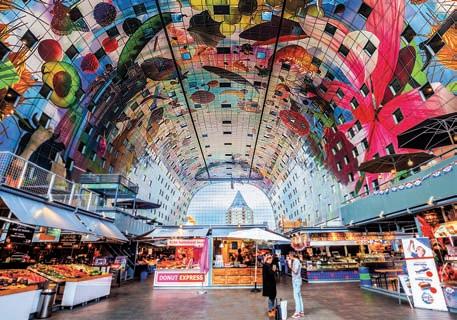
CHRISTIAN MUELLER / SHUTTERSTOCK
One unique museum in The Hague, Escher in the Palace, is dedicated to M.C. Escher. A master Dutch printmaker, Escher created a wondrous world of visual illusions such as his iconic piece, House of Stairs, produced in 1953. The image continues to be reproduced in countless formats around the world even today.
For collectors, the home of the famous blue and white Delft Blue earthenware is just east ofThe Hague. You can visit the last remaining factory, Royal Delft, where they still paint the pottery by hand. Delft is also the birthplace of JohannesVermeer, the master of “Dutch light.” Reproductions of all of Vermeer’s paintings, and insights into his life and times, can be seen at the Vermeer Centre Exhibition. It takes only about an hour to stroll the magnificent car-free city center shopping district.
A twenty-minute train ride from The Hague is the city of Rotterdam. In contrast to Amsterdam’s historic storybook look, Rotterdam is a very modern industrial city. Having been nearly destroyed in WWII, the city of Rotterdam made the decision not to rebuild the old, but build new. Home to the largest port in Europe, and third in the world, it serves the biggest tankers ever built. The Maritime Harbor Museum chronicles the history of the harbor in a very hands-on way and also allows visitors to board a wide variety of historical vessels.
Visitors who have a strong interest in architecture also come to Rotterdam to view the many outstanding modern designs. A colorful example is the well-known Cube Houses designed by architect Piet Blom. In the late 1970s, Blom was commissioned to build housing on top of a pedestrian bridge crossing a major road. The creative solution included the concept of building a community where each dwelling cube represented a tree, creating a forest of habitation, and a social network. To achieve this vision, the 1080 square-foot, 3-storied houses have been turned on a 45 degree angle and mounted on a hexagon-shaped concrete stalk. While living in a piece of art may not be easy, every house is occupied. See the photo on page 18. One cube house is open as a museum of sorts, Kijk-Kubus, and one is available for booking at StayOk Hostel Rotterdam.
Nearby, in the village of Kinderdijk, the nineteen windmills at the Kinderdijk World Heritage site will scratch that “must-see-windmills” itch. Get a hands-on experience, and also learn why the iconic windmills of the Netherlands came to be, and how the millers operate them. As the control of water, both from the sea and rivers, is such an integral part of the existence of the Netherlands, this museum is an important stop on any itinerary.
EVERETT COLLECTION / SHUTTERSTOCK
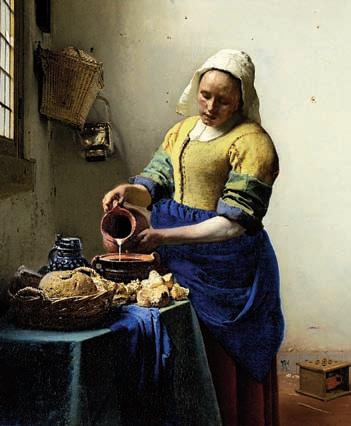
NICK N A / SHUTTERSTOCK
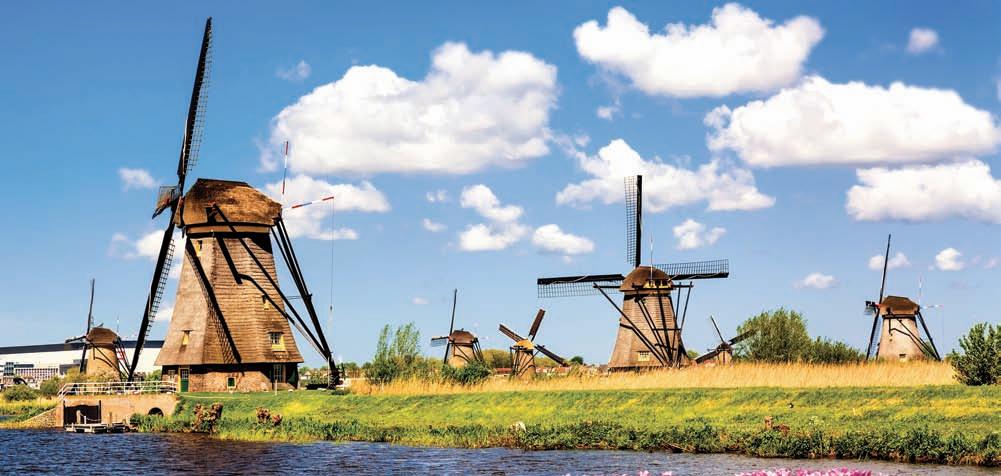
The cheese market participants in Alkmaar (above) put on quite a show for visitors, but it is still a serious trading business since 1593. The Rietveld Schröder House museum (right) in Utrecht is open to visitors. The lively canalside cellar businesses (below) are a popular draw in the summer months in Utrecht.
Within and around the Holland provinces travelers, and cheese lovers especially, won’t want to miss visiting at least one of the famous cheese markets. Alkmaar and TRAVEL-FR / SHUTTERSTOCK Edam are north of Amsterdam, Gouda is in the south near Rotterdam, and Woerden is east in Utrecht province. These cheese markets are as tasty as they are festive. Alkmaar puts on the full touristy, colorful, engaging show, while Woerden’s market is still a farmer’s market where local farmers bring their cheese to sell to commercial buyers. Definitely plan your visit on a market day during the cheese season (March through September). Seeing the unique activities and traditions of these markets, along with the marketplaces and weighing halls that support the industry, are quite memorable.
A good choice for your first foray outside of Holland would be the city of Utrecht, the fourth largest city in the Netherlands, located in the Utrecht province. Bordering the belt line between North and South Holland, Utrecht province exudes the signature Holland vibe found in Amsterdam, but delivered on a scale that is more accessible and definitely less crowded. As picturesque as any city can be (can’t say that enough about the Netherlands), Utrecht’s canals, architectural history, and ambiance will make you smile and keep your camera busy. Utrecht is quite lively thanks to the youthful university crowd, and there are no shortages of cafés and entertainment venues.In the warmer months, the ubiquitous canals of Utrecht offer a special bonus—wharf cellars, built in the Middle Ages right at the canal edges, open as colorful café’s, pubs, shops, and art galleries. There are walking and boat tours of these unique structures along various canals.
Utrecht is also home to theRietveld Schröder House built in 1924. In contrast to traditional building, it is considered one of the icons of the De Stijl design movement of the 1920s. Adjoining a traditional brick row house, the ultra-modern design makes a striking end cap. Though the view of open land, an important part of the layout, is now gone, the site still attracts fans of modern architecture. Commissioned by Mrs. Truus SchröderSchräder,who wanted openness with few walls, Gerrit Reitveld’s design explored what we might know today as an “open concept” floor plan. The widow raised her three children in the house, and lived there for over 50 years. The house is now a museum open to the
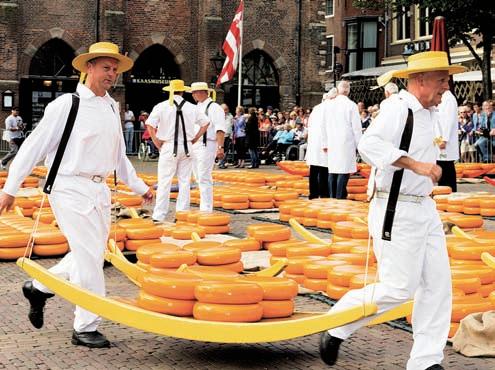
RINI KOOLS / SHUTTERSTOCK
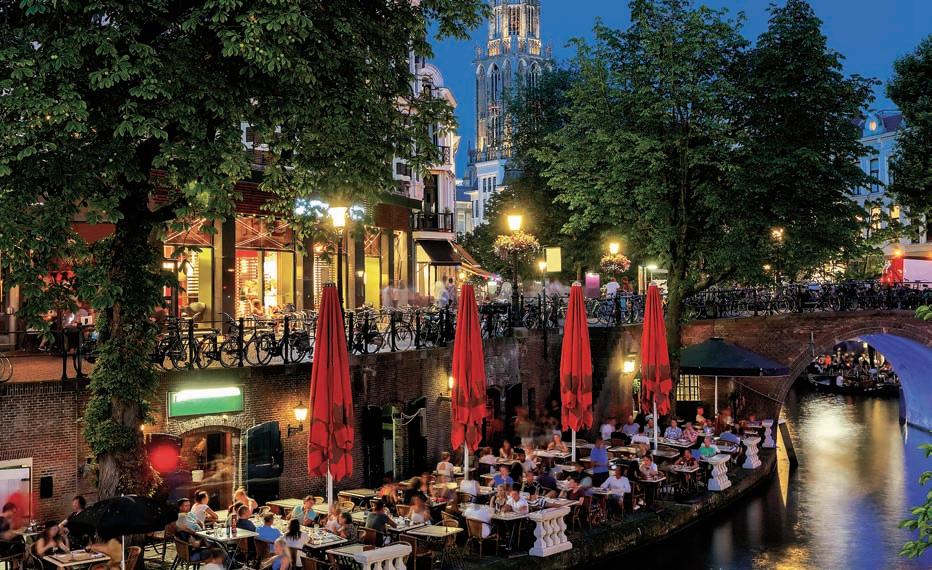
SERGEY DZYUBA / SHUTTERSTOCK public and UNESCO added the property to the World Heritage list in 2000.
Proceeding east from Utrecht, you’ll be heading into castle-lovers’ territory. Gelderland province has over three dozen castles, manor houses, and palaces, including the Het Loo Palace in Apeldoorn, built in 1685 for Stadholder William III, later King William of England. The estate, with its extensive gardens, has been open to the public since 1984, and tours of the palace and grounds are available year round.
The provinces in the east, north, and south may not be as well known as Holland to most foreign visitors, but the provinces have catered to domestic and German tourists for many decades and the hotel infrastructure is well established. The rail and bus lines are frequent, affordable, and service the entire region and we were able to visit many sites without a car.
Taking public transportation into Gelderland province, you can reach Otterloo and enter the Hoge Veluwe National Park and Kröller-Müller Museum. The museum is uniquely situated in the middle of a small forest surrounded by heathlands and dunes. The museum houses the second largest collection of Van Gogh’s art in the world, as well as works by Mondrian, Monet, Seurat, Picasso, and other modern masters. The extremely large, 75-acre sculpture garden displays works by many artists including Oldenburg, Dubuffet, and Rodin. There are 1,700 freeto-rent White Bicycles to tour the entire park. Once the estate of Helene Müller and Anton Kröller, the museum opened in 1938, while the St. Hubertus Hunting Lodge on the estate opened only a few years ago and requires a reservation to enter.
Nijmegen, in Gelderland province, is one of the oldest cities in the Netherlands, dating back to Roman times. It is the center of the Four Days March event which attracts walkers from all over the world. The millionth participant walked the March in 1998. Even if you don’t march, there is a large, colorful festival with music, food, and entertainment surrounding the event. Thirty minutes outside of Nijmegen are the Gardens of Appeltern, with over 200 model gardens to inspire gardeners.
Just north of Gelderland lie the provinces of Flevoland and Overijssel. The newest province, Flevoland, just over 50 years old, is home to the largest tulip bulb growing region in the country. Farms located on

FOKKE BAARSSEN / SHUTTERSTOCK
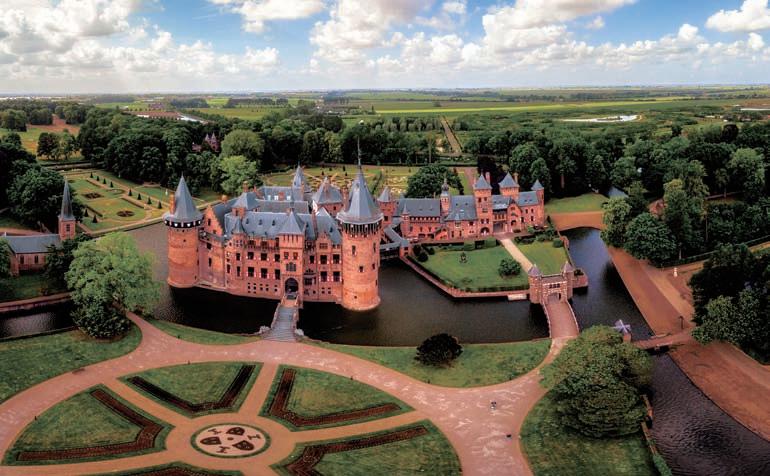
three polders (lands reclaimed from flood plains) occupy approximately twenty square miles of land in the province. The Profytodsd Tulip Festival in the Noordoostpolder runs for three weeks with lots of family activities and tours of the tulip farms.
Overijssel, known for nature preserves and scenic farmland, is also home to the town dubbed the “Venice of the north,” where thatched-roof houses and beautiful gardens in the little town of Giethoorn perch along the banks of the canals. Rent a boat, or take a tour, to glide past this picturesque community.
In the flower season (from March to May) vast swaths of the country are taken over by a riot of color in the form of hyacinths, daffodils, dahlias, and, of course, tulips. The seven million blooms at Keukenhof, south of Amsterdam, make it the world’s largest flower exhibit, and the center of much of the tulip activity. It is open only eight weeks a year to visitors, so it is best to book a tour for this as the crowds, both local and foreign, are huge, especially during the parade dates. But don’t fret, there are maps published annually that highlight many locations in Nord Holland and Flevoland that will be filled with flower power, as well as bike routes that will lead to great picnic spots amongst the flowers as permitted by select farms. Also, you can attend one of 30 flower parades (bloemencorsos); parade dates run throughout the flower season
The De Haar Castle (top), in Utrecht province, embodies the image of a fairy tale castle and is one of the most photographed castles in the Netherlands. Van Gogh’s painting, Café Terrace at Night (1888), (above), is in the collection of the Kröller-Müller Museum in the Hogue Veluwe National Park.
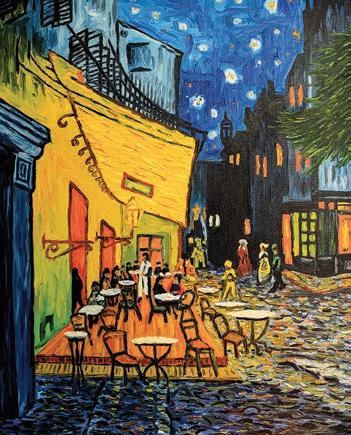
LEDMARK / SHUTTERSTOCK
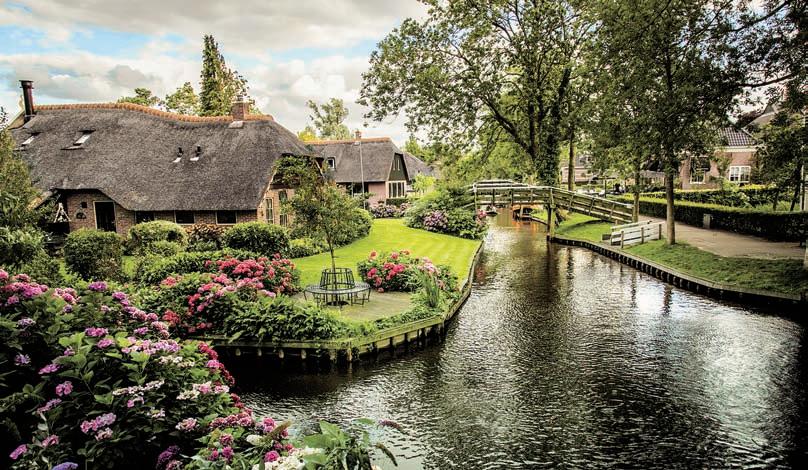
The picturesque town of Giethoorn (top right) in the province of Overijssel draws a million visitors each year. The city of Groningen is well known for its modern innovations, and the university building (above) showcases modern techniques in architecture.
with dates as late as September, including the one in Zundert, in the North Brabant province, and Lichtenvoorde in Gelderland province. Zundert’s is one of the oldest and largest of the paradesMARC VENEMA / SHUTTERSTOCK and is identified on UNESCO’s Intangible Cultural Heritage list. The municipality is also the birthplace of Vincent Van Gogh, and close to the city of Breda. The long history of Breda includes the twelfth-century fortified Breda Castle, the ornate Brabantine Gothic-style Grote Kerk and tower, the fanciful fifteenth-century Bouvigne Castle, and the Begijnhof (courtyard), with 29 sisterhood (beguine) houses still standing from the 1800s—all just a half-hour southeast of Rotterdam.
Bracketing the province of North Brabant are Zeeland province to the west and Limburg to the east. Zeeland is prime beach country, with quaint fishing villages, fantastic seafood restaurants, and colorful kitesurfers to watch.
The capital city of Middleburg, largely destroyed in WWII, has been painstakingly rebuilt brick-by-brick and retains its historic look. Street names, such as Bierkaai (Beer Street), or Houtkaai (Wood Street) indicates which streets traded which products that sailed in and out of the busy harbor in the sixteenth-seventeenth centuries. The abbey complex in the city, c. 1100, with two churches, a tower, museum, and gardens, is a main attractionin the town center.
Limburg province, in the southeast, is known for its culinary arts, historic sites, and Medieval tunnels. Maastricht, capital city of Limburg, has hundreds of national heritage buildings, and distinct Belgian and German influences are evident in the local culture. The remnants of the fortified city walls from the 1200s, contemporary restaurants and markets, and the caves/tunnels of Saint Pietersberg (begun in the thirteenth century), are part of the attractions. The Maastricht Treaty, which formed the European Union and the euro (1999), was signed here in 1992. A worthwhile stop is the Boekhandel Dominicanen bookstore, which is housed in a thirteenth-century church. The building, which went through many phases since Napoleon’s invasion in the 1700s, was transformed again in 2005. The award-winning design was created for the bookstore within the twelfth-century Gothic-style churchutilizing as much of the original structure as possible. The vaulted ceiling, soaring columns, and altar area are integrated into the new design, creating a stunning usable space.
In the town of Elsloo in northern Limburg province, remnants of an ancient village dating as far back as 5,000 BC was uncovered. Inhabitants, referred to as the Linear Pottery Culture, were one of the early European communities to employ farming of crops and herding of animals. They occupied territory in the southern Netherlands down through Germany and the Czech Republic and lived over a period of 1,000 years from 5500-4500 BC. The Elsloo archeological site provided valuable information regarding the abilities and social life of these people. The pottery found includes bowls with distinct linear graphics, cups, and burial sites.There is a quaint museum located in two refurbished historical buildings, Streekmuseum Elsloo, that has artifactsand diagrams of the ancient village on display.
In the north of the Netherlands, just two and a half hours from Amsterdam, the provinces of Groningen, Drenthe, and Friesland have their own unique historical and cultural sites—from the prehistoric dolmens of Drenthe, to the innovative and modern hub of Groningen, to the seafaring life of Friesland.
The province of Drenthe is known for national park lands and farming. Bike lanes are plentiful and set up to get you anywhere you want to go. Though sparsely populated now, the region has been inhabited for over 15,000 years. Drenthe is well known for its 53 dolmen sites and burial mounds in the northern part of the province. The dolmens (hunebedden) are burial sites dating back to 3500 BC. Boulders, weighing thousands of pounds, are balanced atop support stones to mark the burial sites. You can obtain a map with all the sites numbered for easy touring from the Hunebed Center museum and discovery park in Borger. There are three popular national parks in Drenthe: Dwingelderveld (heathland), DrentsFriese Wold (forests and dunes), and Drentsche Aa (a valley stream area with traditional old villages and winding walking paths).
Groningen, a major northern city known for innovation, gained city status in 1245. University students make up 25% of the city’s population today, so it has, without a doubt, a lively city center. The University of Groningen was founded in 1614, and continues as a world-renowned university today that is grounded in the sciences. There are many stunning examples of modern architecture in Groningen, including various campus buildings and the Groninger Museum, yet there remain well-preserved historic buildings worth visiting. The famous St. Martin’s Tower with 62 bells, next to the main market square, and the ornate Goudkantoor (gold office) remained in tact after the war, with the latter now housing a restaurant. The colorful, unique Groninger Museum, a work of art on its own, showcases contemporary thoughtprovoking art, applied arts and fashion, a history of Groningen, and a collection of the Hague School of art, among others.
Friesland province is the only province with an official language independent from Dutch, Frisian. The region has several charmingcities, 24 interconnected lakes, and connections to the outer Walden Sea Islands via the town of Harlingen in the north. Picturesque as always in the Netherlands, the little town of Ijlst, with its water-side gardens, is ready for its close-up and rivals the beauty of Giethoorn, without the crowds. The capital, Leeuwarden, has a well-preserved medieval city center with over 600 sites listed as nationalmonuments, so there is plenty to see.
The Netherlands has a fantastic infrastructure that makes it easy to see the entire country. Just imagine, trains every 30 minutes, up to 80 trains per day, between Rotterdam and Breda alone! The Netherlands, beyond Holland, is so picturesque and so easy to explore, that an extended visit is the way to go.
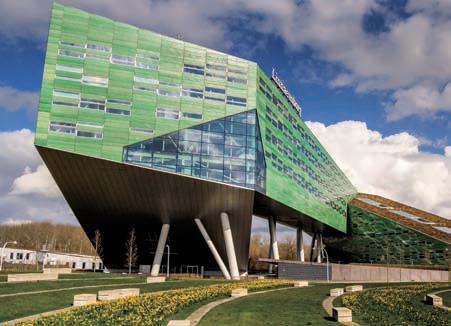
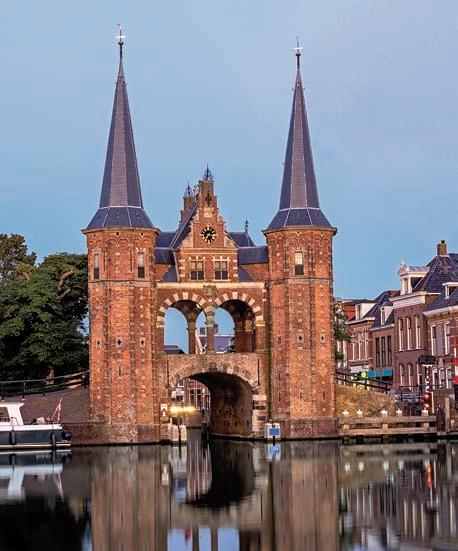
STEVE PHOTOGRAPHY / SHUTTERSTOCK
The Watergate (below left) in the northern town of Sneek is one of the few original watergates left in the country. The dolmens (burial sites) are found in the Drenthe province. They date back 3500 years and the stones (below) weigh thousands of pounds each.
365 FOCUS PHOTOGRAPHY / SHUTTERSTOCK
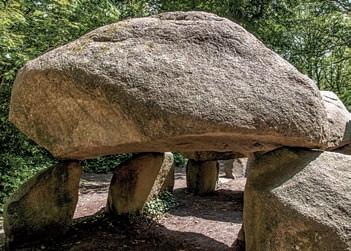
I NFORMATION FOR T RAVELERS
English is widely spoken throughout the Netherlands and there will always be someone nearby to translate if need be. It is estimated that 90% of the population can converse in English.
Visit the main tourism website for the Netherlands at www.netherlands-tourism.com and www.holland.com. Most of the twelve provinces have their own websites as follows:
Utrecht: www.discover-utrecht.com Arnhem, Gelderland: https://en.arnhem.com Veluwe Park region: www.visitveluwe.com Geithoorn Village, Overijssel: en.visitnijimegan.com Flevoland: www.visitflevoland.nl/en Zeeland: www.zeeland.com/en North Brabant: www.visitbrabant.com/en Limburg: www.limburg.com/en South Limburg: www.visitzuidlimburg.com Groningen: www.visitgroningen.nl/en Drenthe: www.visitdrenthe.com Friesland: www.friesland.nl/en
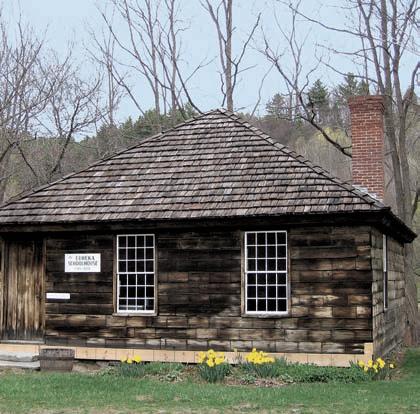

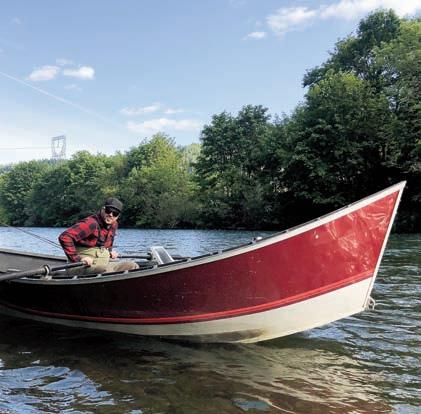

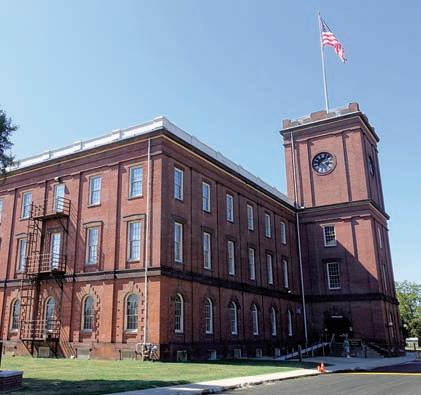

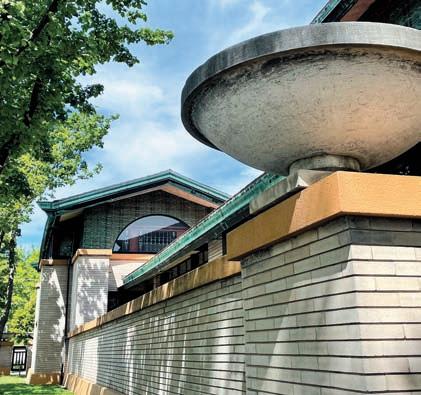
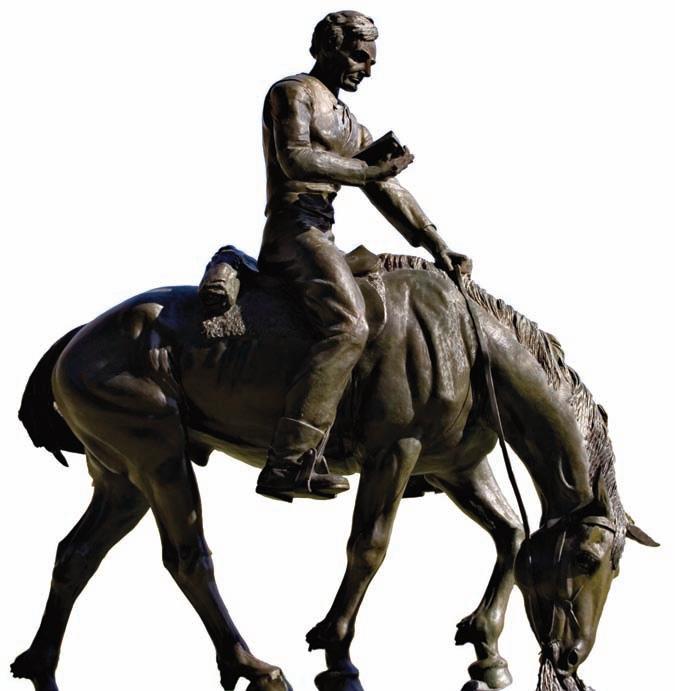
HONOR/WIKIPEDIA COMMONS
DADEROT/WIKIPEDIA COMMONS
JONI HANEBUTT / SHUTTERSTOCK
JOSHUA RAINEY PHOTOGRAPHY / SHUTTERSTOCK

ALL THOSE SPRINGFIELDS!
By M. Maxwell Richardson
The question: What town name appears most often on a map of the entire United States? It seems like a sure bet. “Springfield” has to be the answer. My travels have taken me through quite a few—seemingly in every state. Alas, the most used name is not Springfield. It turns out that there are indeed many Springfields, enough to garner a respectably high place on the list, but the winner—the most widely assigned town name in the U.S. by several accounts—is Washington. In fact, it seems there are nearly twice as many towns named Washington as Springfield. Oh, well.
If George Washington deservedly has so many eponymous towns in the U.S., and Riverside, in second place by some accounts, has an obvious reason to be there, what is it about Springfield, in third place, that makes it so widely used? Is it that your typical pioneer appreciated a convenient source of water—say, a spring bubbling up in a grassy open space suitable for planting? “Let us call it Springfield,” they would say. Or is it that the name Springfield—the one in Essex, England, to be precise—traveled to our shores with immigrants who flung the name nostalgically and liberally across this new land? Or was it that the prosperous Springfield, Massachusetts, the very first of many in the U.S., was the inspiration for those that followed, as was the case similarly wherein the Tipton Brothers from Springfield, Missouri moved to Colorado and planted their own Springfield there. In one odd instance the name was chosen as simply a better alternative to a previously chosen name, to wit, the replacement of Protectworth, New Hampshire, with, yes, Springfield.
Before we focus our attention on a selection of particular Springfields, let us consider the nature of the towns on the list. First off, some of the Springfields are cities, some are towns, some are no more than “census designated places” or CDPs, meaning that they are usually rural, unincorporated, but often have a post office or their own zip code. Then there are the Springfields that are just a crossroads that someone calls Springfield (informing their county, of course), and finally there are the historical places, such as the 1849 California Springfield that once had a gold rush population of 2,000 but is now just a “T” in the road with a historical marker and zero population. (Google will show you the way there if you want to go.) Qualification for the METROPOLITAN MUSEUM OF ART/WIKIPEDIA COMMONS list really comes down to the fact that a Springfield must simply be on a map. Even the U.S. Geological Survey acknowledges the difficulty of identifying and categorizing all the small towns and named places, including the Springfields, that dot our land. It is an imprecise science.
According to most accounts, there are Springfields in 35 states. We would reasonably expect that there would be a limit of one Springfield per state, and that is, in fact, the case— except for Wisconsin. That state, apparently abandoning tradition, and a modicum of practicality, has five Springfields and one Springfield Corners. Go figure. The oldest Springfield in the U.S. is in Massachusetts.
Opposite from top:The Eureka School in Springfield, Vermont, served students for over a century starting in 1790. The Springfield Armory in Massachusetts was built at the direction of George Washington. A Frank Lloyd Wright house graces Springfield, Illinois.A drift boat plies the waters of the Mckenzie River near Springfield, Oregon. An industrious Springfield, Massachusetts is depicted (above) in a nineteenth-century Thomas Chambers painting.A studious Abraham Lincoln is depicted in bronze at Lincoln, Oregon. Lincoln declined the Oregon governorship and remained in Springfield, Illinois.
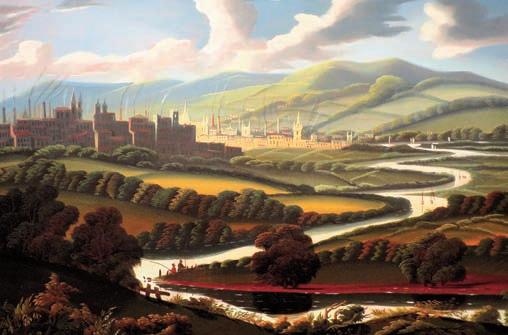
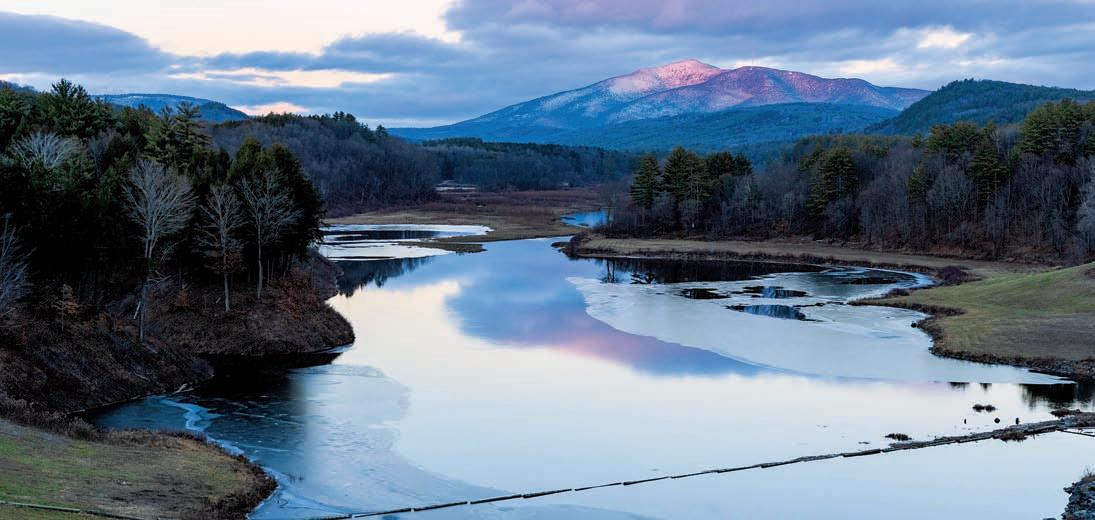
J A JOHNSON / SHUTTERSTOCK
Three miles outside of town, an icy North Springfield Reservoir reflects the glow of Vermont’s Mt.Ascutney in the distance.
Springfield, Massachusetts, resident James Naismith invented, in 1891, an indoor sport to keep athletes fit during the winter months. His city is now home to the Naismith Memorial Basketball Hall of Fame.
Originally an Indian trading post on the banks of the Connecticut River, Agwam was purchased in 1636 by William Pynchon and subsequently renamed, allegedly, for the Springfield on the Roman Road in Essex, England. The youngest Springfield, at least according to the information made available by each of the Springfields, is the one in Florida, which nonetheless will celebrate its 100th birthday in 2035.
Identifying the largest Springfield in the U.S. is a little tricky. Some of the Springfields are part of a larger metropolitan complex, or metroplex, such as Eugene-Springfield in Oregon, and Hartford-Springfield in New England. The Oregon metroplex claims a population of 370,000, while the ConnecticutMassachusetts duo share a large airport that serves the 1.9 million residents. Limited to just the Springfield portion proper, the Oregon (63,000) and New England (156,000) Springfields accede first place, populationwise, to Springfield, Missouri, at 169,200. As medium-sized cities and smaller towns, what the Springfields may lack in sheer size they make up for in numbers and dispersion!
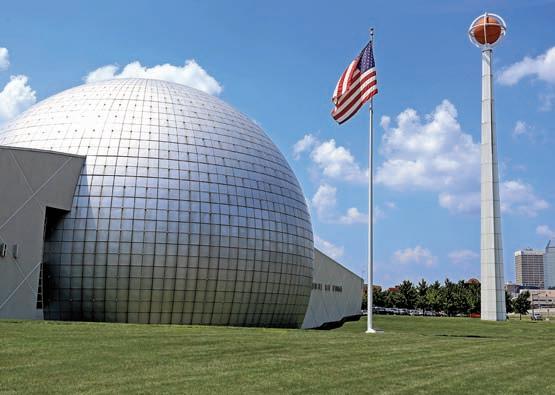
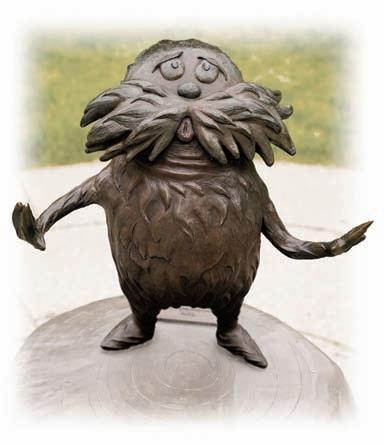
ALEXANDER SVIRIDOV / SHUTTERSTOCK The majority of the Springfields are east of the Mississippi with one of the easternmost located on the banks of the Black River in Vermont, very near the New Hampshire border. Founded by way of a 1761 land grant, the potential of the powerful Black River Falls quickly gave birth to this mill town, surrounded as it was by rich agricultural land. Precision machining was the millwork of choice and the town’s booming industry carried on strongly through the WWII era. Worth seeing are the collections and exhibits in the American Precision Museum. And Lovejoy Precision Cutting Tools still operates from a facility on the bank of the river. The River Valley Technical Center extends the tradition educationally to newer generations. Additionally, this Vermont town’s historical educational lineage features in the Eureka Schoolhouse, a restored building dating to 1790 that served students through 1900. Just 25 miles to the northeast sits the smaller, former Protectworth, New Hampshire, known since its 1794 name change as, what else, Springfield, New Hampshire.
One hundred miles due south, in Massachusetts, lies the first of the U.S. Springfields. Founded in 1636, on a bluff overlooking the confluence of four rivers, the city’s history is rich with important milestones in its almost 400 year timeline.
After a century and a half as an agricultural area and regional trade center it was in 1777, at the direction of George Washington, that the Springfield Armory was established for the production of muskets. Later, the armory’s Springfield rifle was carried by many of the Union troops in the Civil War and still later the M1 Garand rifle, named for its Canadian designer John Garand, a Springfield Armory employee, was the standard issue firearm for American soldiers in WWII and the Korean War. The Armory was closed in 1968 and the preserved buildings are now the Springfield Armory National Historic Site. The Springfield Armory name lives on in the products of the former L.H. Gun company of Devine, Texas, renamed Springfield Armory, Inc., which make replica versions of the classic M1 rifle.
Notable among the many achievements that count Springfield, Mass, as home are America’s first dictionary, the1805 MerriamWebster, the first American gas automobile, by the Duryea Brothers in1893, and the first successful American motorcycle, the Hendee Manufacturing “Indian,” made in 1901.
The rich alluvial soil of the area makes Springfield a continuing agricultural center. In fact, the multi, multi-award winning bluesbased musical entertainer Taj Mahal, although born (1942) in Harlem, was raised in Springfield, worked as a farm manager and studied agriculture and animal husbandry before embarking on his musical journey. The area’s farming tradition is reflected in the popular Farmers’ Market at Forest Park, that carries on even through the winter. The market’s website (see Information For Travelers at the end) lists market hours and a collection of recipes worth checking out. Along with the market, the city caters to its residents and visitors with 304 restaurants, bars, and coffee shops. An assortment of museums operated under the auspices of the Springfield Museums showcases art, science,
26 SHADES OF GREEN / SHUTTERSTOCK history, and the life and work of Springfield’s own Theodore Geisel, yes, Dr. Seuss.
Further south, all the way to South Carolina, travelers will come across the state’s small Springfield, centrally located about 100 miles northwest of Charleston. The town’s stately former high school, c. 1929, has been added to the National Register of Historic places and now houses the visitor center, two museums, and a gallery. But this town’s claim to fame is a notable local event—the South Carolina Governor’s Frog Jump, patterned after the event in Calaveras County, California, made famous by Mark Twain. Taking place around Easter each year (since 1969), the event is the centerpiece of a large festival, one of several local events that include, in November, the lovable Springfield Defends Fruitcake gathering. Buy a fruitcake, enter the fruitcake bake contest, or just have lunch.
Named for the prominent and historic city of Springfield, Massachusetts, Ohio’s namesake city was founded in 1801 by Kentuckian James Demint in a southwest Ohio area that was previously the site of Shawnee settle-
Listed on the National Register of Historic Places, the Paramount Theatre in Springfield, Massachusetts, (below) and adjoining hotel are undergoing a $41M restoration. The theater, which includes nightclub-style dining on the lower level, is scheduled to open in the near future. The Lorax (bottom left) occupies a placeat the Springfield, Massachusetts, Dr. Seuss National Memorial Sculpture Garden. Forest Park (below) is a popular park in the city.
CORY SEAMER / SHUTTERSTOCK
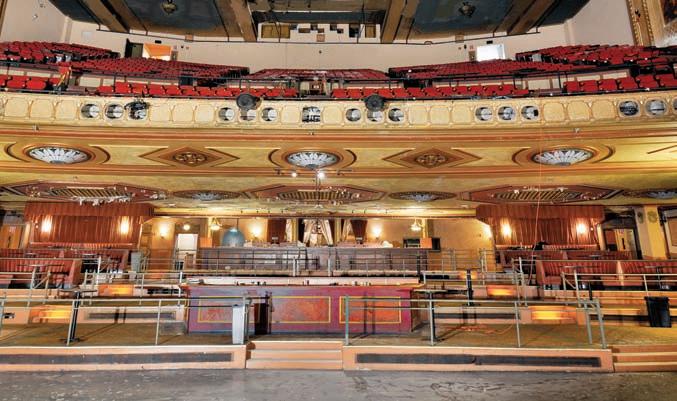
ments. Developing through the decades as an industrial city and home to Kelly-Springfield Tires, International Harvester, now Navistar, and ten now defunct auto manufacturers including Westcott Motor Car Company, it notably was where the patent for the Wright brothers’ airplane was written in 1904. 4H was founded here in 1902, and Ohio’s only Frank Lloyd Wright prairie-style
WIRESTOCK CREATORS / SHUTTERSTOCK
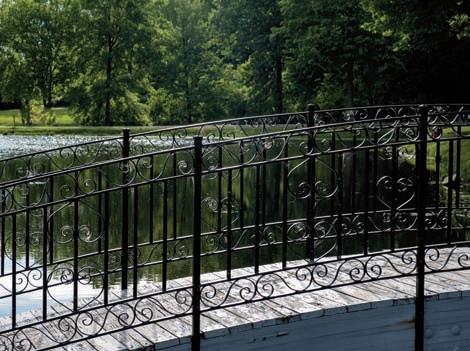
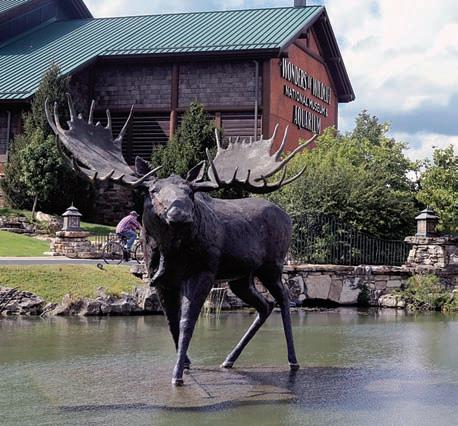
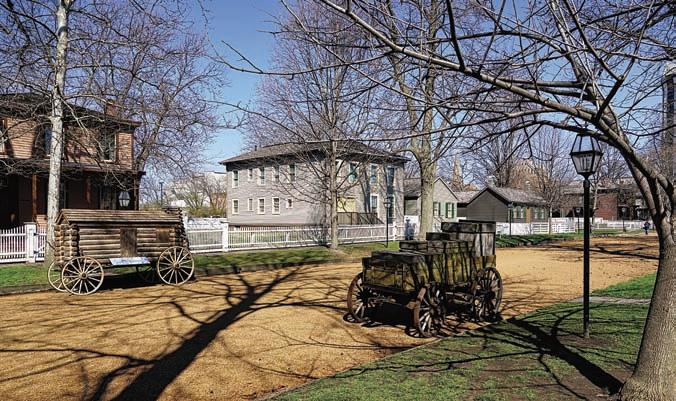
RICK WEBER / SHUTTERSTOCK residence, the Westcott House, c. 1908, has undergone restoration and is now open to the public.
Springfield, Louisiana, was, in the nineteenth century, a prominent point in eastern Louisiana’s transportation network. Connected by water to New Orleans, boats would transfer goods at the town, primarily lumber from the Livingston Parish, for delivery by boat to New Orleans. When the railroad came to the area, Springfield opted to continue with marine transport, citing a fear of lawlessness associated with the railroads KIMBERLY HALLER / SHUTTERSTOCK as the reason, and missing an opportunity to keep up with the times. Bypassed by the rail line, Springfield, Louisiana, slipped into a future as a quiet town on the Natalbany River. As a former seat of the parish government, the c. 1835 Old Livingston Parish Courthouse, listed on the National Register of Historic Places, keeps a bit of the town’s history alive.
With so many Springfields in the country, one of them would have to be a state capital, right? Of course—it’s Springfield, Illinois. Famously home to lawyer turned president turned immortal spirit of America, Abraham Lincoln, the nascent city was only thirteen years old when Lincoln made his way via Kentucky and Indiana to Illinois, arriving in 1831, as a visitor—taking up residence there six years later in 1837. His law career was based there and it was through his efforts (and those of some associates) that Springfield was made state capital in 1839, wresting that title from former capital Vandalia. As a young man Lincoln worked on the Mississippi River and was exposed to the practice of slavery in the deep South, informing the politics for which he is known. Illinois, with Springfield as its capital, was a major force in the Civil War. Ulysses S. Grant trained Union soldiers at Springfield giving the city both military
and political gravitas.
Home to the grand Illinois State Fair at the city’s permanent fairgrounds, the Illinois state capital is also a city of many and varied museums. Many showcase aspects of Lincoln’s life and activities—the Presidential Library and Museum, Lincoln’s home of 17 years (tours are free), and, about 15 miles northwest of town, the cabin at Lincoln’s New Salem State Park. Additionally, several museums feature Springfield’s role in the Civil War. On the lighter side there is a Route 66 “Motorheads” Museum, a botanical garden, several art museums, and a kids’ museum of health and science—the Kidzeum.
A bit more than 300 miles to the southwest of the Illinois state capital lies the largest Springfield of all, in the state of Missouri. On a plateau originally settled by the Osage nation, it was the brothers Campbell arriving from Tennessee in 1829 who founded presentday Springfield near a natural well that flowed into a creek. Hmmm. Being located on one of the three plateaus comprising the Ozark Mountains, the terrain around the city is hilly and wooded, making the Missouri city an attractive tourist destination. Country music is big in Springfield (as it is in nearby Branson), but the home store of Bass Pro Shops is the main draw, being, in fact, Missouri’s biggest tourist attraction. You can book a stay at the Bass Pro Angler’s Lodge if you’ve traveled from afar. Springfield’s Civil War history is presented at Wilson’s Creek National Battlefield, where visitors can drive a 5-mile historical loop and view exhibits, a film, and maps of the battle.
And now for something completely different—a Springfield that is not a Springfield. Well, not an actual Springfield. I’m told there is a TV show called The Simpsons—and that it is the longest running animated sitcom ever, and that it has received acclaim as, among other things, “20th century’s best TV series,” (Time). Some clever folks in Henderson, Nevada, along with Fox and Pepsi, had the idea to build their own promotional, full size “724 Evergreen Terrace, Springfield” to attract fans of the show. Originally painted in the show’s glowing paint scheme, this actual house in a subdivision is now desert tan. And occupied, presumably, by actual people. So, if you are in Nevada and need to visit a Springfield, you can at least drive past the Simpson manse on the real Red Bark Lane. The Simpsons’ home town can also be visited within Universal Studios theme parks in Hollywood and Orlando.
Matt Groening, the creator of The Simpsons, is from Portland, Oregon. Growing up, as he revealed to Smithsonian magazine in 2012, he watched Father Knows Best, based in “Springfield.” Mr. Groening assumed, as a kid, that it was Springfield, Oregon, just 100 miles down the road from his home town. It wasn’t. But Mr. Groening realized later that the anonymity of that show’s “Springfield” allowedfolks across the nation to assume it was their nearby one. For this reason he chose the name for the Simpsons’ fictional town, admitting that it was, at its roots, Springfield, Oregon, the last stop on our tour.
Often overshadowed by Eugene, its larger sister city, Springfield, Oregon, nonetheless benefits from its proximity. The Eugene-Springfield metroplex provides residents and visitors alike a wide array of cultural and entertainment opportunities. Oregon’s Springfield is just one hour from the Pacific coast to the west and an hour from skiing in the Cascade Mountains to the east. The Lower Willamette Valley is an outdoor recreation mecca. With the University of Oregon right next door, there are plenty of sports to watch—free or for a reasonable price. Attend a theater, dine, or check out one of the many bike shops in this bike-happy place, then go for a spin on the Ruth Bascom Riverbank bike path.
Springfield, Oregon, is a fine place to end our tour of some of the forty or so Springfields that dot our states—unless you want to travel south to California’s gold country and read the plaque on the monument where the colorful boomtown Springfield once stood. You will have the place all to yourself.
A bit of rural Ohio (top) is preserved amid this Springfield’s development as an industrial city. The historic section of Springfield, Illinois (above), is where Lincoln’s house is located. Prior to locating in Springfield, Lincoln lived at nearby New Salem (above right), now the Lincoln’s New Salem State Historic Site.
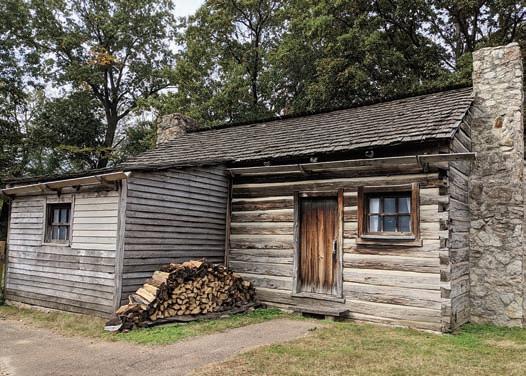
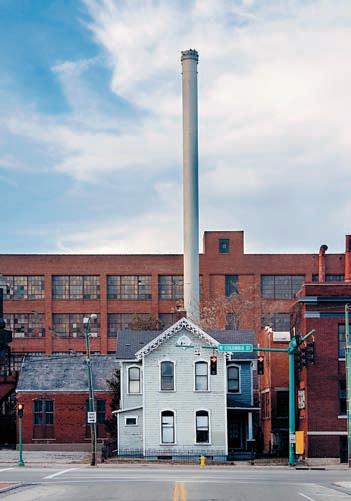
C J HANEVY / SHUTTERSTOCK NOEHILL
Springfield, Missouri’s Bass Pro Shop facility is a destination unto itself. Among the attractions is the bronze moose (below left) greeting visitors to the Wonders of Wildlife National Museum and Aquarium. A monument (above) at Springfield Road and Horseshoe Bend Road marks the site of the former gold rush boomtown of Springfield, California.
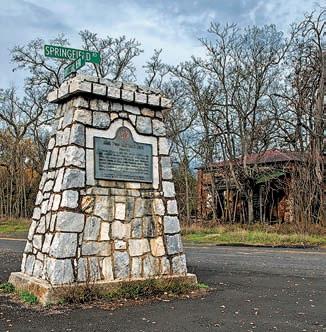
I NFORMATION FOR T RAVELERS
Springfield, Vermont. The website, https://springfieldvt.gov/, lists many things to see and do under the “Visitors” tab. The 1790 Eureka Schoolhouse is at 470 Charlestown Road in Springfield’s Goulds Mill village. Springfield, Massachussets. The city website, https://www.springfield.ma/, is extensive, listing even the inventions that were created there. The Springfield
Armory has its own website at www.nps.gov/spar/index.htm. The Farmers
Market at Forest Park website lists hours and a selection of recipes at www.farmersmarketatforestpark.com. The city’s museums, including the Amazing World of
Dr. Seuss Museum, are grouped together at https://springfieldmuseums.org/about/. Springfield, South Carolina. The town’s website, www.springfieldsc.com, lists events such as the frog jump and fruitcake celebration. Springfield, Ohio. The city’s lively website, www.visitgreaterspringfield.com, is filled with engaging things to see and do. Springfield, Illinois. The comprehensive website, www.visitspringfieldillinois.com, lists a variety of things to do and places to stay, etc. Under the “Plan” tab you will find a link for a downloadable visitor guide. Details for a side trip to
Lincoln’s New Salem State Park can be found at www.nps.gov/liho/learn/historyculture/newsalem.htm or www.lincolnsnewsalem.com. The Illinois State Fair website, https://www2.illinois.gov/statefair/info/Pages/Default.aspx, lists everything you want and need to know about the big fair in August. Springfield, Missouri. Everything from timely events to places to stay, and even information on the big Bass Pro Shop, can be found on the city’s website, www.springfieldmo.org. Wilson’s Creek National Battlefield, www.nps.gov/wicr/index.htm, makes an engaging side trip from Springfield. Springfield, Oregon. At press time the city’s website, https://springfieldor.gov/visitors/, was not functioning properly, but plenty of information is available from the chamber of commerce site at: https://www.springfield-chamber.org/.



